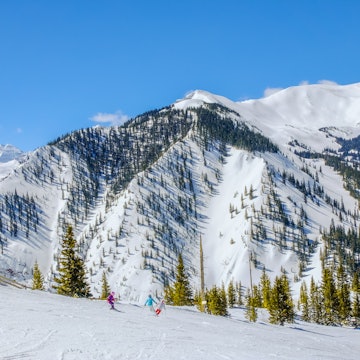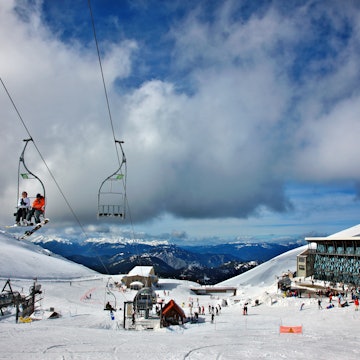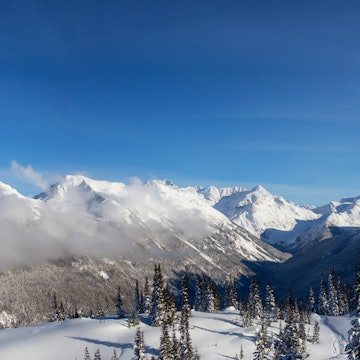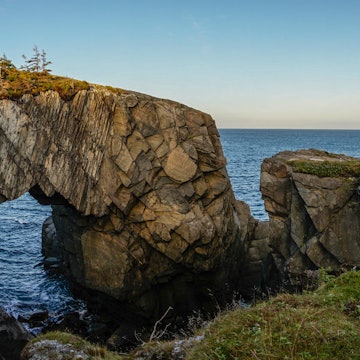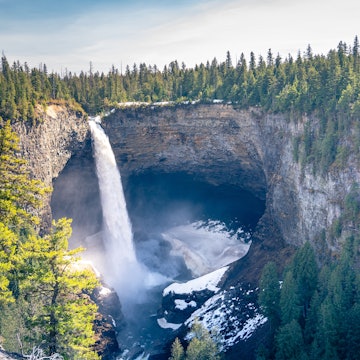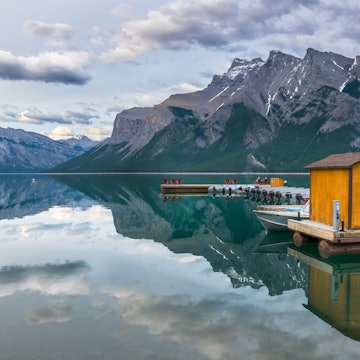

We asked experts from leading outdoors groups to give us their top tips on how to prepare for a multi-day hike © Westend61 GmbH / Alamy Stock Photo
There are few better experiences than being outdoors, smelling the fresh air and taking in the open spaces. Multi-day hikes merge the beauty of the outdoors with the physical and logistical challenge of an extended journey.
For those who want to amp up their mileage and turn a day hike into a longer, multi-day trekking adventure – here are seven tips from passionate leaders who work with five leading outdoors organizations from Australia to Canada to California and beyond.
Editor's note: Please check the latest travel restrictions before planning any trip and always follow government advice.

1. Choose wisely and research thoroughly
Matt Berna, managing director for Intrepid Travel’s North American region shares his perspective on the importance of deciding what you’d like to get out of your multi-day hiking journey, before taking the time and effort to embark on it.
“From my experience, particularly as a guide, it’s most important to be honest with yourself in terms of what you’re looking for and what you want to do – what you want to achieve,” he says. “For example, something like Kilimanjaro is a scenic hike, but it’s arduous – it’s a ‘challenge hike.’ Is [your] goal to reach a remote area that’s hard to access? Or to check something off the bucket list? Is it for the bragging rights?”
Berna emphasizes that the time of year you’re traveling makes a difference in what kind of experience you’ll get.
“Some routes are busier than others, depending on where you choose to go and what you want to do,” he says. “If you’re someone who’s looking for a backcountry experience and want to be by yourself, so consider when you go – the offseason or the brink of the offseason are typically the best time to go if you’re willing to put up with trickier weather conditions.”
Berna even suggests trying a professionally-led hike as a first time for your multi-day hike, as experts can teach you how to prepare for a solo trip when you’re ready.
Guided trips are also a great idea to look into, he says. “If you want to go remote into the backcountry, research and consider using a special operator – they’ll provide the right gear such as oxygen tanks and can even fit you properly. On a trek such as the Inca Trail’s 4-5 day trek, the porters will help you carry your gear, food, and water. You’re also employing the locals there – and they’re experts.”

2. Invest in the proper gear
“There’s no such thing as bad weather, only the wrong gear!” says Charlie Carlow, Owner of South Australia’s Arkaba Homestead and host of the Wild Bush Luxury – Arkaba Walk experience, which is a Great Walk of Australia. He suggests some of the most important equipment to take on a multi-day hike through the outback to stay safe and warm, first and foremost emphasizing the importance of proper hiking shoes.
“Gym trainers aren’t adequate for this journey. Comfortable hiking boots that are well worn in are best, preferably with ankle support,” he says. “You’ll also need the usual suspects for an outback walking adventure – breathable layers and a few good pairs of hiking socks. Convertible pants are handy and a lightweight waterproof jacket is essential. Thermals and a beanie will keep you toasty in the winter months. A head torch to move around the camp after dark is a good idea.”
“Lighter and heavier clothing ratings will be determined by the weather outlook," says Tony Sharley, Founder and Lead Guide of Murray River Walk, another of Australia’s Great Walks. “Typically a thermal underlayer, non-cotton long-sleeved shirt, fleece, neck buff, hat/beanie, gloves, waterproof jacket and long trousers should all be in your kit.”
Becky Wong, long-time Sierra Club volunteer trip leader from Victoria, British Columbia, Canada agrees on the importance of investing in the right gear. Wong has led more than 60 trips with the Sierra Club and serves as the training officer for international trips as well as the quality officer for the organization.
“Personally I like to travel with quality, lightweight equipment, because I don’t like to carry a lot of stuff – especially on a multi-day trip,” she says. “Clothing is very important...You want something that wicks moisture off to stay warm and dry.”
We tested boots, backpacks and more in Patagonia – here’s what we learned
Wong's favorite versatile gear piece of gear is a simple bandana. “This simple square of fabric can hold up in the sun, in the rain, serve as a washcloth, headband, a mask, and to protect your neck,” she says.
Wong also recommends carrying an “ouch pouch” with necessary non-emergency medical supplies, such as moleskin for blisters, bandages, wipes, gauze, sunscreen and blister cream – as well as pain relievers, and necessary other medications or supplements.
“Layering is something that we talk about, constantly,” says Andy Kronen, REI’s North American Adventure Travel Program Manager, who has been hiking and backpacking his entire life. “On a multi-day trip, in my mind, the two most important pieces of gear you can have are solid, broken-in footwear that’s appropriate for the terrain, and a well-fitted backpack.”
“It’s even a great idea to go out for a night first, just to test your gear – your shoes and your backpack,” shares Intrepid’s Berna. “That’s how you learn exactly what you need and whether your gear is efficient, how to plan your meals, your water filtration systems.”
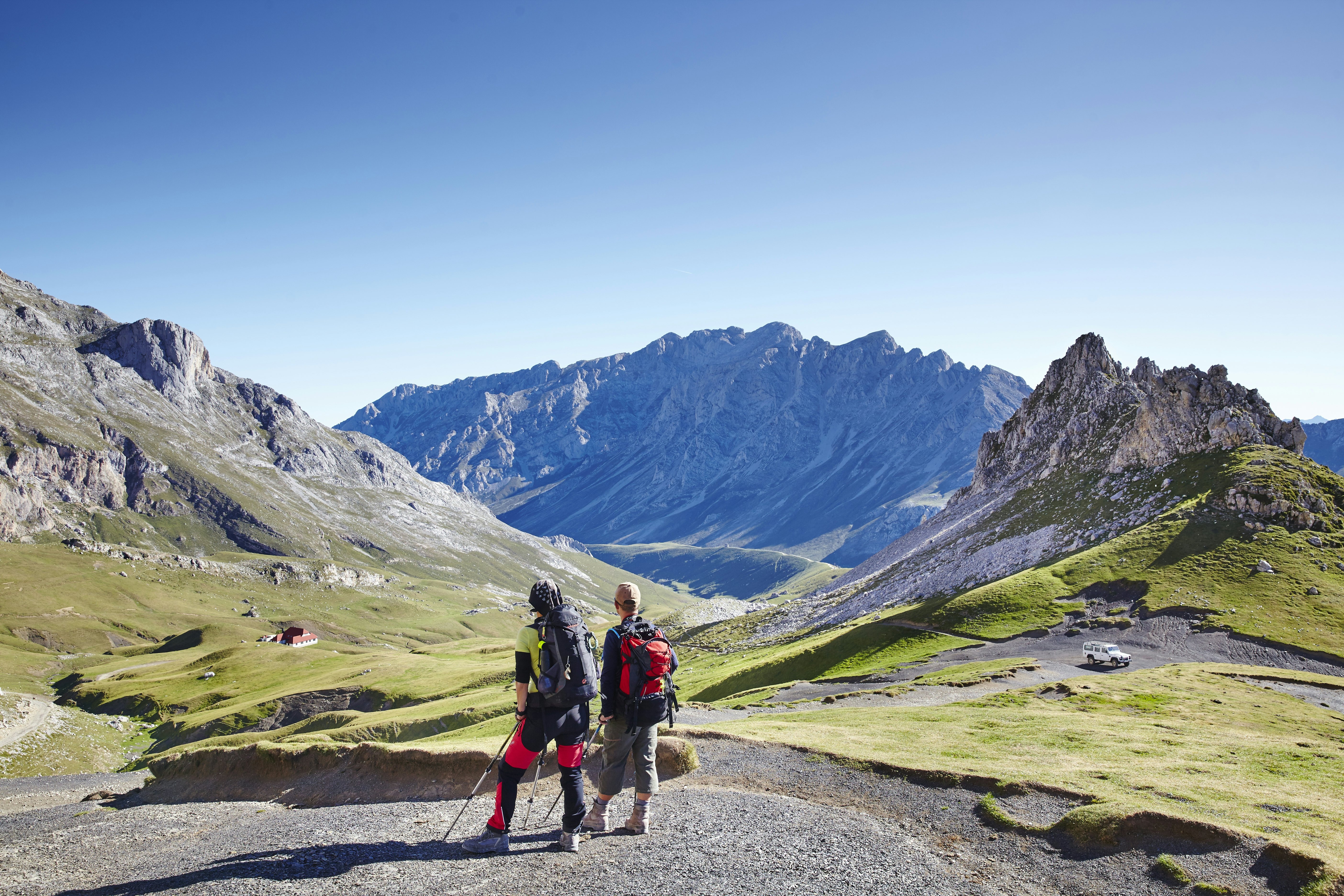
3. Prepare both mentally and physically for the journey
Try to train ahead of time by replicating the activities you’ll experience on the trip when you’re closer to home.
“If you live at sea level or you’re used to working out at the gym, or have more of an urban lifestyle, when you find yourself at 11,000ft on a rocky dirt trail like you would on the Inca trail trek, your cardiovascular fitness is a very different experience,” says REI’s Kronen.
“Being out in the elements, being out on the trail, and being at altitude – if there’s the opportunity to replicate these conditions at home, even if it’s driving for an hour to get into the mountains, do this,” he recommends. “It’s also important to build in some time to acclimate and get used to the higher elevation on higher trails.”
For example, if you’re hiking Machu Picchu, try to arrive at Cusco a few days early to acclimate to the altitude before embarking on the hike itself.
Matt Berna agrees. “A lot of times, people have trained in different environments, such as walking every day – but when you get them into the dry climates of somewhere like the desert southwest with exposure to sun and elevation, they find it very tiring,” he says. “Layer that with jet lag from flying into the destination,” and it’s going to be a real challenge.
Wong suggests gradually building up your mileage for a longer trek. “Try adding two miles to your training each month leading up to the month of your trip,” she suggests. “If you’re more prepared, you’ll have a more enjoyable trip.”

4. Be mindful of the seven “Leave No Trace” principles
It’s also important to respect the seven “leave no trace principles” when you’re hiking anywhere in the world. Wong explains the importance of these principles when you’re embarking on a long-term trek to protect the land you’re traveling on for future hikers and local wildlife.
The first principle is to plan ahead and prepare.
“Have a safety management plan and be prepared for a number of things that might happen on the trip,” says Wong, including “your equipment and what you might need. “
The second is to camp on durable surfaces. When you travel, tread carefully, don’t take shortcuts, and don’t trailblaze.
The third is to dispose of waste properly. Pack in and out all trash, litter and necessary waste.
The fourth is to leave what you find. “Don’t take anything that’s not yours, such as an artifact like an arrowhead,” says Wong. “Leave it for other people to enjoy!”
The fifth principle is to minimize campfire impact. Don’t scorch the earth, or leave any trace that you’ve been there.
The sixth principle is to respect wildlife. “We’re in their land,” says Wong. “We don’t interfere with them.”
The seventh principle is to be considerate to other visitors. This includes being courteous by yielding to other hikers when necessary, and allowing nature's sounds prevail by keeping your own noise to a minimum.
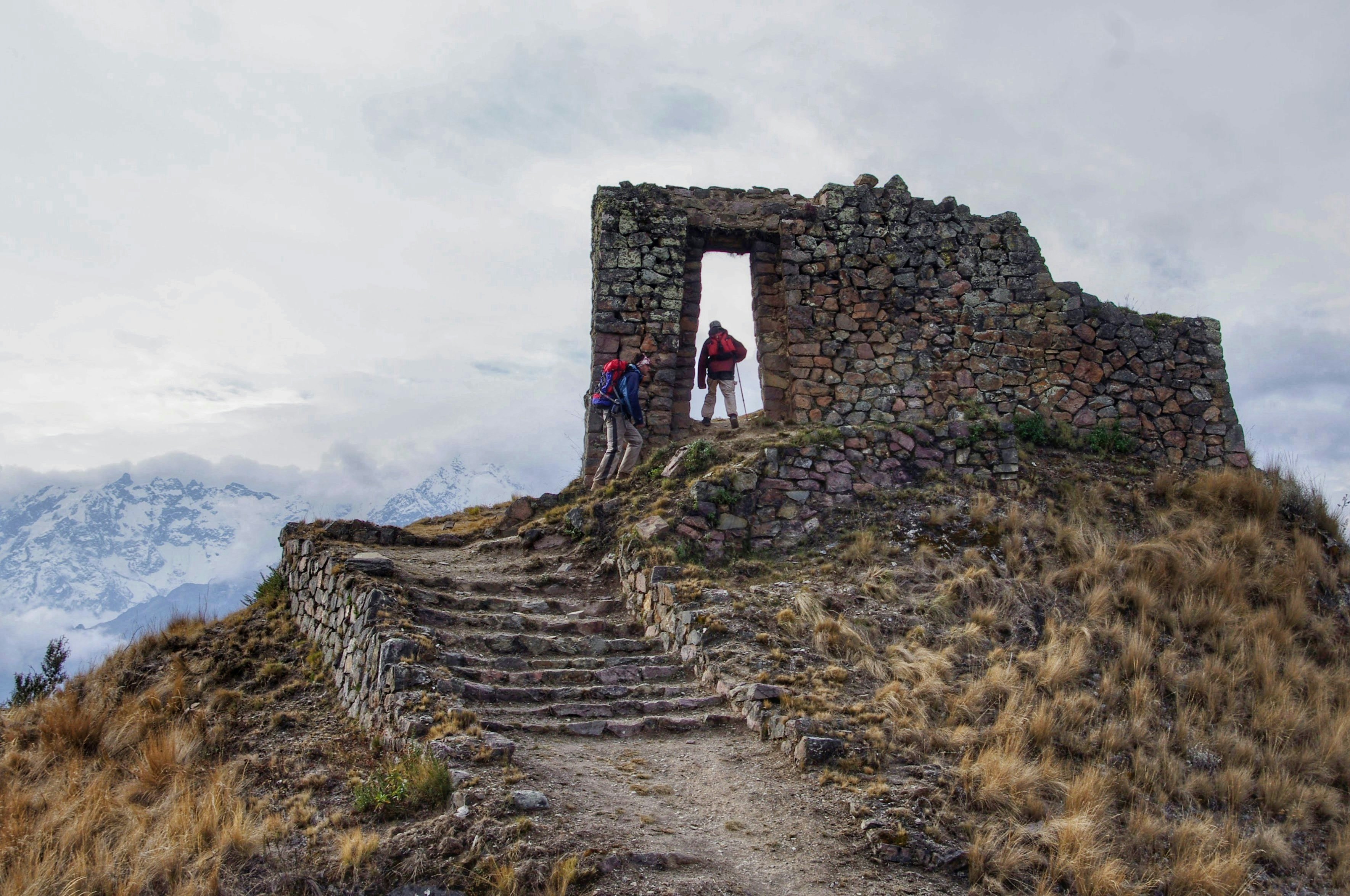
5. Respect the region you’re visiting and its customs
It’s important to be aware of what’s happening around the world internationally on a conservation level, honoring and respecting the diversity, equality and inclusion on a broader scale.
“Recognize the value of conversations focusing on the area you’re traveling to,” says Wong. “This includes keeping up with current events, and spreading awareness of what’s happening in terms of conversation on a larger level with those who you’re trekking with. Trek with an open mind and leave any prejudices at home. Be patient. Be an ambassador of goodwill to all people.”
Wong emphasizes the importance of being respectful and considerate of other hikers who are also enjoying the area you’re trekking in.
“When you travel lightly, you’re not traveling for people to see you,” she says. “Take your time to absorb the beauty and be inspired by something natural like a river, a mountain, or a waterfall. Be grateful and show your appreciation for what you’ve seen. With curiosity, it’s not how far you go but how deeply you explore the experience and learn from it.”

6. Plan ahead and prepare – expect the unexpected
“My biggest advice is to plan and prepare,” says Wong. “Planning and preparing sets you up for any situation that could happen. This means anything from making sure you have enough water, to ensuring you have the proper gear. Be flexible. Even though you might have a plan, things happen and plans change. Weather can change very quickly.”
Kronen agrees keeping an eye on weather forecasts before the trip and paying attention to your instincts when it comes to making safe decisions.
“Make sure you’re familiar with the area that you’re going to be spending time in, checking the weather conditions prior to starting out, and understanding what the climate conditions are going to be,” says Kronen. “People need to be prepared to dress up or dress down for the climate, and always have rain gear with them, even in the desert.”
Often, in destinations such as the Southwest US, people might not anticipate the extreme temperature swings from day to night, because there’s a preconceived notion on what a “desert” is. In reality, these regions can experience temperature swings of 50-60 degrees between day and night and varying altitudes.
If this happens, make sure to stay safe and smart, as opposed to pushing on into a situation that might put you or your fellow hikers in danger. If you’re hiking alone on a multi-day trip, give someone you trust a general timeline of when your arrival at your next outpost should be.
“Always let someone know where you’re going and how long you plan to be out there – because anything can happen,” says Berna. “There are even backpacks nowadays that have sensors built into them in case you’re lost – search and rescue crews can pick up your beacon.”

7. Be smart, but also have fun
Pick a trek that suits your interests, and don’t worry too much about embarking on the picture perfect hiking experience – there’s no such thing as a perfect hike. Multi-day hikes are about what you learn about yourself and about the environment while you’re on your journey.
“It just feels so good to be out in nature – it’s so much of a stress reliever to spend a day out in the wilderness,” says Kronen. “It’s made me a huge advocate for the environment and for our natural world.”
Berna agrees. “When I think of a multi-day hike, I think of a more peaceful and relaxing experience,” he says – as opposed to strenuous hikes, with a steeper grade. “I love to do lots of miles, but maybe something that’s not so arduous. You can walk at a slower pace, and it’s more about enjoying the environment and having time to think.”
Wong highlights the spiritual experience that being at one with the wilderness can offer. “With exploration and curiosity, it’s not how far you go – but how deeply you explore the experience and learn from it,” she says.
“Expect to make great friends, learn new things, experience creative thoughts and find yourself,” says Sharley.
No matter where you go or what hike you do, your adventure will most likely transform your perspective on the power of the natural elements and give you a greater sense of respect for Mother Earth.
You might also like:
A beginner's guide to backcountry camping
9 common mistakes to avoid while hiking and camping
Our top 10 picks for backpacking cooking gear






